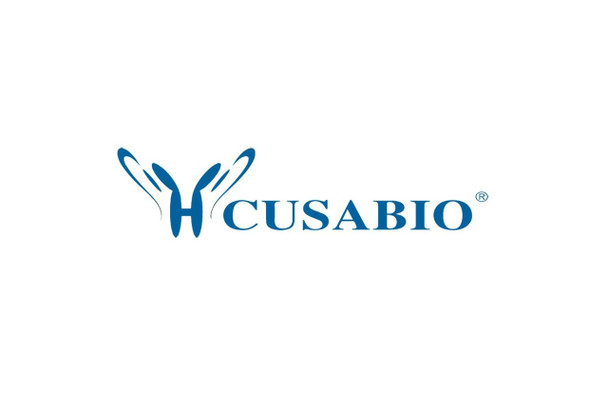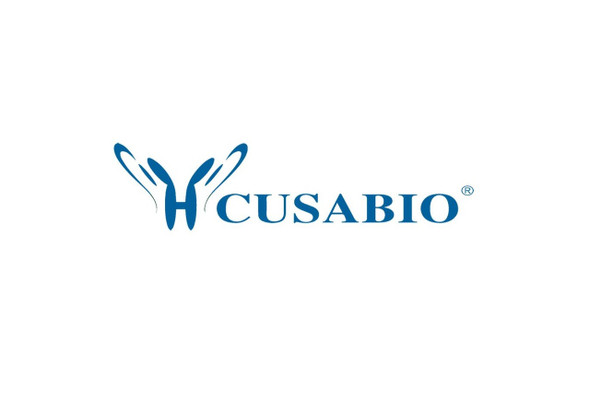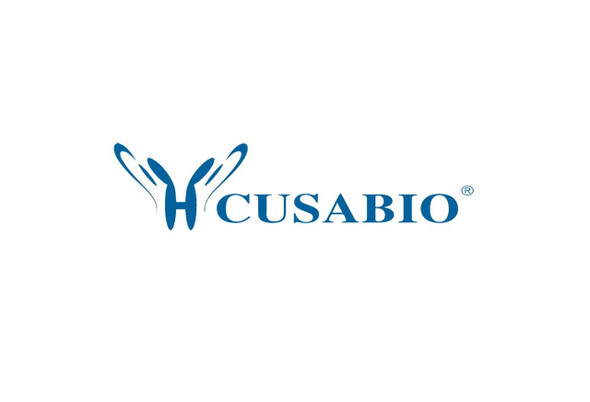Cusabio Human Recombinants
Recombinant Human CCN family member 1 (CCN1) | CSB-EP006463HU
- SKU:
- CSB-EP006463HU
- Availability:
- 3 - 7 Working Days
Description
Recombinant Human CCN family member 1 (CCN1) | CSB-EP006463HU | Cusabio
Alternative Name(s): CCN family member 1 Cysteine-rich angiogenic inducer 61 Insulin-like growth factor-binding protein 10 Short name: IBP-10 Short name: IGF-binding protein 10 Short name: IGFBP-10 Protein GIG1
Gene Names: CCN1
Research Areas: Immunology
Organism: Homo sapiens (Human)
AA Sequence: TCPAACHCPLEAPKCAPGVGLVRDGCGCCKVCAKQLNEDCSKTQPCDHTKGLECNFGASSTALKGICRAQSEGRPCEYNSRIYQNGESFQPNCKHQCTCIDGAVGCIPLCPQELSLPNLGCPNPRLVKVTGQCCEEWVCDEDSIKDPMEDQDGLLGKELGFDASEVELTRNNELIAVGKGSSLKRLPVFGMEPRILYNPLQGQKCIVQTTSWSQCSKTCGTGISTRVTNDNPECRLVKETRICEVRPCGQPVYSSLKKGKKCSKTKKSPEPVRFTYAGCLSVKKYRPKYCGSCVDGRCCTPQLTRTVKMRFRCEDGETFSKNVMMIQSCKCNYNCPHANEAAFPFYRLFNDIHKFRD
Source: E.coli
Tag Info: N-terminal 6xHis-SUMO-tagged
Expression Region: 25-381aa
Sequence Info: Full Length of Mature Protein
MW: 55.4 kDa
Purity: Greater than 90% as determined by SDS-PAGE.
Relevance: Promotes cell proliferation, chemotaxis, angiogenesis and cell adhesion. Appears to play a role in wound healing by up-regulating, in skin fibroblasts, the expression of a number of genes involved in angiogenesis, inflammation and matrix remodeling including VEGA-A, VEGA-C, MMP1, MMP3, TIMP1, uPA, PAI-1 and integrins alpha-3 and alpha-5. CYR61-mediated gene regulation is dependent on heparin-binding. Down-regulates the expression of alpha-1 and alpha-2 subunits of collagen type-1. Promotes cell adhesion and adhesive signaling through integrin alpha-6/beta-1, cell migration through integrin alpha-v/beta-5 and cell proliferation through integrin alpha-v/beta-3.
Reference: "The angiogenic factor Cyr61 activates a genetic program for wound healing in human skin fibroblasts."Chen C.-C., Mo F.-E., Lau L.F.J. Biol. Chem. 276:47329-47337(2001)
Storage: The shelf life is related to many factors, storage state, buffer ingredients, storage temperature and the stability of the protein itself. Generally, the shelf life of liquid form is 6 months at -20?/-80?. The shelf life of lyophilized form is 12 months at -20?/-80?.
Notes: Repeated freezing and thawing is not recommended. Store working aliquots at 4? for up to one week.
Function: Promotes cell proliferation, chemotaxis, angiogenesis and cell adhesion. Appears to play a role in wound healing by up-regulating, in skin fibroblasts, the expression of a number of genes involved in angiogenesis, inflammation and matrix remodeling including VEGA-A, VEGA-C, MMP1, MMP3, TIMP1, uPA, PAI-1 and integrins alpha-3 and alpha-5. CYR61-mediated gene regulation is dependent on heparin-binding. Down-regulates the expression of alpha-1 and alpha-2 subunits of collagen type-1. Promotes cell adhesion and adhesive signaling through integrin alpha-6/beta-1, cell migration through integrin alpha-v/beta-5 and cell proliferation through integrin alpha-v/beta-3.
Involvement in disease:
Subcellular Location: Secreted
Protein Families: CCN family
Tissue Specificity:
Paythway:
Form: Liquid or Lyophilized powder
Buffer: If the delivery form is liquid, the default storage buffer is Tris/PBS-based buffer, 5%-50% glycerol. If the delivery form is lyophilized powder, the buffer before lyophilization is Tris/PBS-based buffer, 6% Trehalose, pH 8.0.
Reconstitution: We recommend that this vial be briefly centrifuged prior to opening to bring the contents to the bottom. Please reconstitute protein in deionized sterile water to a concentration of 0.1-1.0 mg/mL.We recommend to add 5-50% of glycerol (final concentration) and aliquot for long-term storage at -20?/-80?. Our default final concentration of glycerol is 50%. Customers could use it as reference.
Uniprot ID: O00622
HGNC Database Link: HGNC
UniGene Database Link: UniGene
KEGG Database Link: KEGG
STRING Database Link: STRING
OMIM Database Link: OMIM









